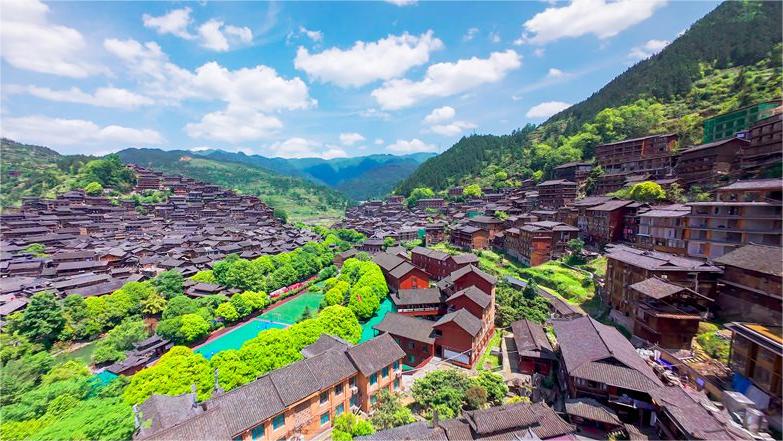Intelligent robots transform aquaculture management in E China's Zhejiang
Jiang Zhenlong, the manager of an aquafarm in Shangyu township, Jiangshan city, east China's Zhejiang Province, can now efficiently oversee his fishponds using his mobile phone, thanks to the help of three robotic assistants.
Jiang closely monitors the water quality parameters of his fishponds in real-time through the app, staying well-informed about any changes in weather conditions.
The data, which includes nitrate nitrogen, ammonium nitrogen, pH value, and chemical oxygen demand, is collected by a fishpond bottom maintenance patrol robot and digital monitoring buoys.
In addition to the patrol robot, the aquafarm uses two other robots: one that gathers fish and grows plants to clean the water and another that uses light to purify the water.
These robots, along with the digital monitoring buoys, were developed by a team led by Professor Zhang Hangjun from Hangzhou Normal University.
The robotic helpers are tasked with monitoring water quality, smart feeding, and purifying the ponds. This eliminates the need for the traditional "three ponds and two dams" aquaculture wastewater treatment system.
This traditional system typically consists of a sedimentation pond, an aeration pond, and an ecological purification pond connected by two filter dams.
However, while traditional aquaculture water treatment equipment can purify water, Zhang said it cannot provide real-time feedback on water quality conditions.
"Many aquaculture faculties are built near mountains. Constructing the 'three ponds and two dams' system requires excavators. This construction process takes a lot of time, work, and land space. The system is also prone to issues like the growth of blue-green algae in the sedimentation pond and clogging of the filter dams," he explained.
In response to the practical needs of the aquaculture industry, Professor Zhang's team undertook a key research and development project launched by the Department of Science and Technology of Zhejiang Province. The team collaborated with multiple organizations to research key technologies for ecological capacity assessment and ecological restoration of various aquacultural water bodies.
After years of efforts, the team has developed three intelligent aquaculture robots, an integrated denitrification and dephosphorization device for efficient freshwater aquaculture wastewater treatment, and off-site restoration equipment such as a self-flow valve-free filter pool.
The intelligent robots are equipped with advanced features, including dual-frequency positioning systems supported by the U.S.-owned Global Positioning System (GPS) and China's BeiDou Navigation Satellite System (BDS). The robots also have laser radars to sense their surroundings, special tools to monitor and maintain the underwater environment, and a central control system. They can navigate on their own or be controlled remotely. Notably, the major components of these robots are domestically produced.
In May 2023, these innovative achievements were used for demonstration purposes at several aquaculture sites in Zhejiang, including the aquafarm in Shangyu township.
One year later, the equipment has successfully improved the quality of the aquacultural wastewater at these sites, meeting China's Class I discharge standards for aquaculture water in freshwater ponds.
Compared to traditional treatment equipment, the innovations developed by Zhang's team offer significant advantages. They are smaller, easily transportable, convenient to load and unload, and can effectively purify water, according to Zheng Zhangfu, a man in charge of one of the aquaculture sites.
The intelligent robots can effectively monitor changes in nitrogen and phosphorus levels in the water and remove excess nutrients, preventing water eutrophication, said Jiang.
"The operating mode of these robots is similar to that of household vacuum cleaning robots. Once programmed, they can patrol the designated water area," explained Zhang, adding that the robots collaborate with each other and can sense surrounding geographic information and their own position in real-time.
China's plan for national agricultural and rural science and technology development during the country's 14th Five-Year Plan period (2021-2025) aims to increase the mechanization rate of aquaculture from 32 percent in 2020 to 50 percent by 2025.
"The development prospects of consumer-level intelligent aquaculture robots are worth looking forward to," Zhang remarked.
He emphasized that the low-cost and portable working mode of robots aligns with the needs of aquaculture farmers and environmental protection. Zhang disclosed that his team is actively collaborating with enterprises to further reduce the manufacturing costs of robots and expand their application.
Photos
Related Stories
- Eco-friendly crab breeding demonstration park in China's Suzhou realizes zero tailwater discharge
- Aquaculture thrives on edge of Tengger Desert in NW China's Gansu
- Fish farm develops into tourist hotspot in exploration of modern aquaculture
- Intelligent semi-submersible aquaculture platform self-sufficient in green energy
- Small seafood grows into prosperous industry in E China’s Zhejiang
- Tailwater recycling saves cost, boosts production of aquaculture
- Sea ice off northern China disrupts aquaculture
Copyright © 2024 People's Daily Online. All Rights Reserved.









